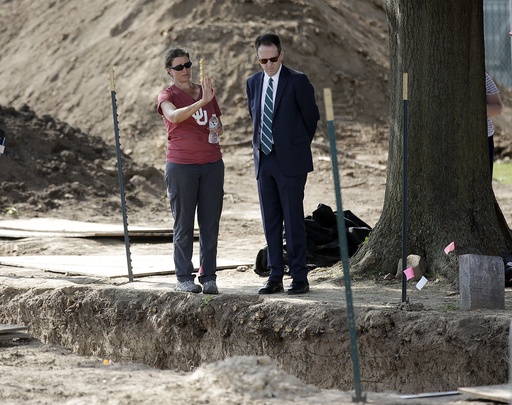The recent search for the remains of victims of the 1921 Tulsa Race Massacre has concluded, uncovering three additional sets of remains with gunshot wounds, according to investigators. These three sets were part of the 11 sets of remains unearthed during the latest excavation at Oaklawn Cemetery, as stated by state archaeologist Kary Stackelbeck on Friday. Two of the gunshot victims showed evidence of being shot by different weapons, while the third victim exhibited signs of both gunshot wounds and burning.
Forensic anthropologist Phoebe Stubblefield, who will be examining the remains on-site, revealed that one victim suffered injuries from bullets and shotgun pellets, while the second victim was shot with two distinct types of bullets. Search efforts have been focusing on finding simple wooden caskets, as historical accounts such as newspaper articles, death certificates, and funeral home records indicate these were used to bury the massacre victims, Stackelbeck explained.
The exhumed remains will be sent to Intermountain Forensics in Salt Lake City for DNA and genealogical testing to facilitate the identification process. This search follows the recent identification of remains from World War I veteran C.L. Daniel from Georgia, who did not show signs of gunshot wounds according to Stubblefield, highlighting the challenge of identifying such wounds after many years have passed.
Since Tulsa Mayor G.T. Bynum initiated the project in 2018, this marks the fourth search for victims, resulting in the discovery of 47 remains so far. Bynum expressed his desire to see the search for victims continue, underscoring its importance in uncovering the truths of the century-old tragedy. Stackelbeck mentioned that investigators are mapping the graves to determine the necessity of further searches based on their findings.
Descendant of massacre survivors and committee member overseeing the search, Brenda Nails-Alford, commended Bynum’s dedication to finding the victims’ remains and expressed hope for the continuation of these efforts to bring justice and healing to the affected families and community. Recently, Bynum and City Councilor Vanessa Hall-Harper formed a committee to explore potential reparations for survivors and descendants, as well as for the north Tulsa area impacted by the massacre. The 1921 Tulsa Race Massacre, a violent incident lasting two days, resulted in the destruction of Black Wall Street, the deaths of hundreds of Black individuals, and the devastation of numerous homes, businesses, and institutions, leaving a lasting scar on the community.


